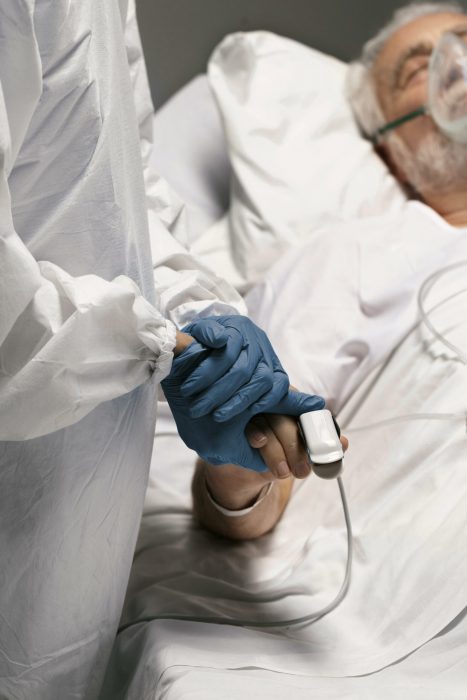End of Life
Medical Terms
Explained
with Dr Emeka Okorocha
When someone close to you is dying, unfamiliar medical terms can feel overwhelming. At a time when emotions are already high, hearing words you don’t understand can add confusion and distress.
That’s why we’ve teamed up with NHS doctor and healthcare influencer Dr Emeka Okorocha to help break down the medical language often used around the end of life.
These explanations are here to help you feel more informed, reassured, and prepared, whether you’re supporting someone as they’re dying, trying to understand what happened, or just want to feel more confident talking about death and dying.

Signs and Symptoms Near the End of Life
Short videos to help you recognize common signs that may appear in the final days of life—what they mean, why they happen, and how they’re managed with care and compassion.
Cheyne-Stokes breathing
A common pattern of breathing at the end of life.
Terminal Agitation
What to expect if someone becomes restless or agitated in their final days.
DNACPR (Do Not Attempt Cardiopulmonary Resuscitation)
A medical decision about whether to attempt CPR if a person’s heart stop.
Here are a few other end of life terms that you might have heard used or be familiar with but not sure on what they mean.
Actively dying
This is the final stage of life, usually lasting hours or days, when the body is slowly shutting down. A person may become unresponsive, sleep more, eat and drink less, and have changes in breathing, like long pauses between breaths. These changes are all natural and part of the dying process.
Advanced care plans
This is a way for someone to plan ahead for the care they would like if they become too unwell to make decisions. It can include their preferences for treatments, where they’d like to be cared for, and any personal wishes, like who they want around them. It helps families and healthcare teams know and respect their choices.
Advanced decision to refuse treatment
This is a legal document where a person states which medical treatments they do not want in the future if they’re unable to communicate their wishes. This could include refusing life support, resuscitation, or specific procedures. Doctors and healthcare teams must follow this decision when the time comes.
Cheyne-strokes breathing
A common breathing pattern seen near the end of life. A person’s breathing may become shallow, with long pauses between breaths, followed by deeper or faster breaths. This can look worrying, but it’s a natural part of the body slowing down and is not usually distressing for the person.
DNACRP
A medical decision that means if a person’s heart stops, doctors and paramedics will not try to restart it with CPR (chest compressions or electric shocks). This is only put in place when CPR is unlikely to work or would cause more harm than good. It allows for a more peaceful and natural death.
Death rattle
A rattling or gurgling sound that can happen in the last hours or days of life when a person is no longer able to clear saliva or mucus from their throat. While it can sound unsettling, the person is not usually aware of it or in any discomfort. Medications or changing their position can help reduce the sound.
Hospice care
Hospice care is for people with life-limiting illnesses and focuses on comfort, dignity, and improving quality of life rather than trying to cure the illness. Care can be given in a hospice, at home, or in a hospital. It includes pain management, emotional support, and help for families.
Palliative care
Palliative care is for anyone with a serious illness, not just those at the very end of life. It focuses on relieving pain and symptoms, supporting emotional well-being, and improving quality of life. It can be given alongside other treatments and helps people live as well as possible for as long as possible.
Syringe driver
A small, battery-operated pump that gives a continuous dose of medicine under the skin. It’s used when someone can’t take tablets or needs steady symptom relief, like pain control, nausea management, or anxiety relief. The syringe driver helps keep symptoms under control without needing frequent injections.
Terminal agitation
Some people become restless, anxious, or confused in the last days or hours of life. They may seem unsettled, struggle to rest, or even become agitated. This can happen for different reasons, such as changes in the body, pain, or emotional distress. Medication and reassurance can often help calm them, making their final moments more peaceful.
